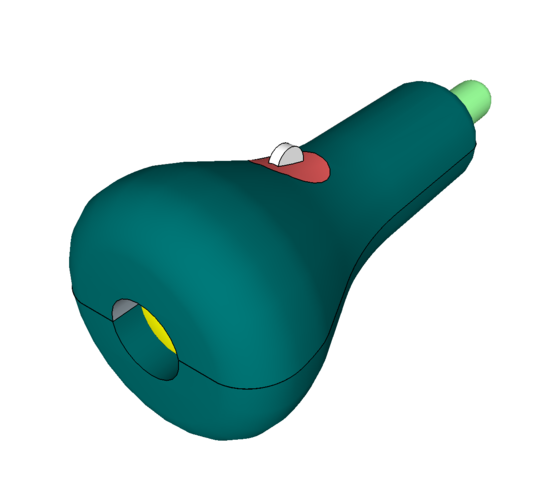

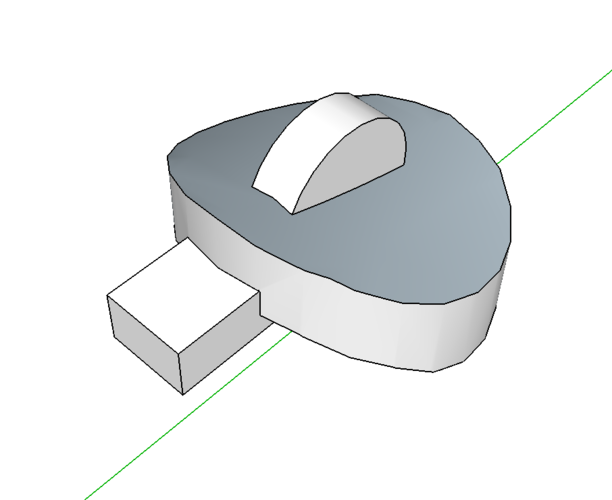


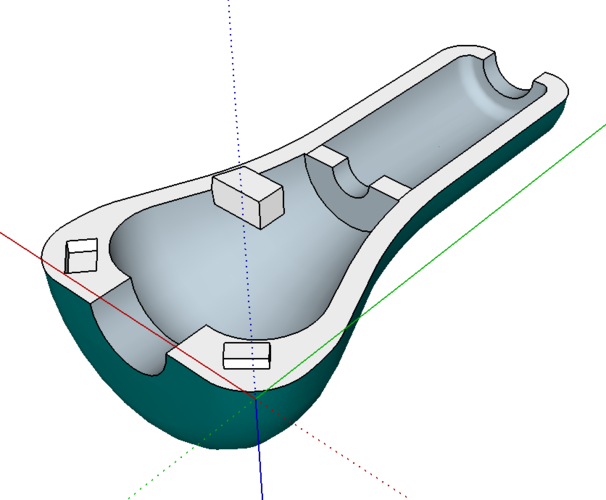
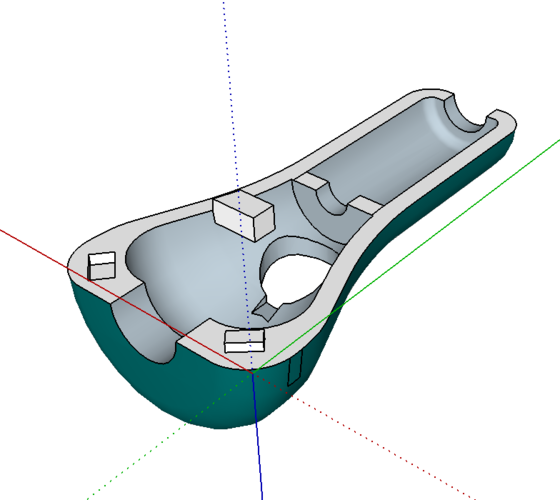
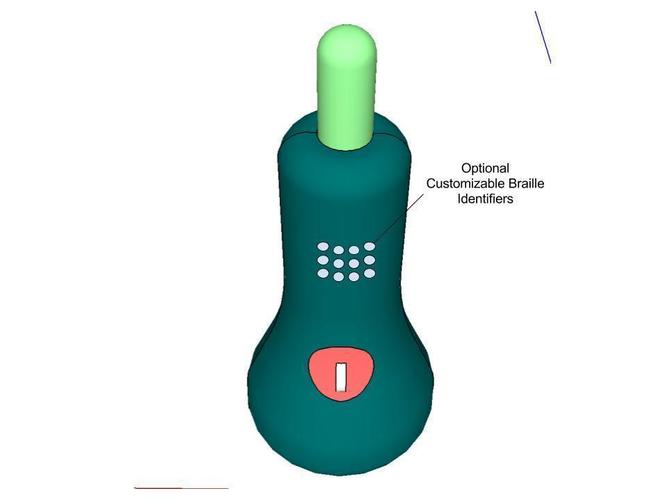

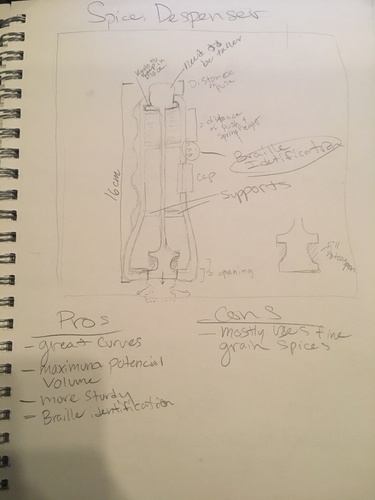
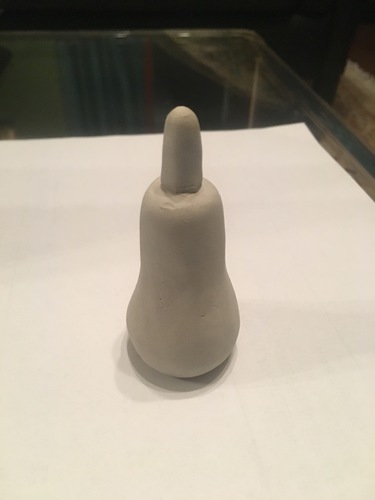
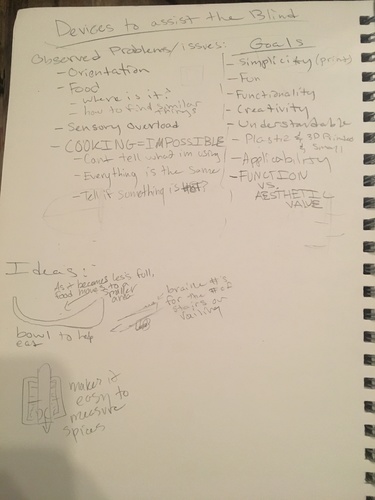

Prints (0)
-
No Prints Yet
Be the first to upload a Print for this Design!
Description
The Spice Holder and Measurer is a unique and new devise that battles, one, of the many issues in the kitchen for visually-impaired cookers. Spices are one of the most common ingredients in cooking, yet few new concepts for the way they actually make it into your dish have been pursued. For a visually-impaired person, measuring out the proper amounts of ingredients, while being efficient, and not making a mess, is nearly impossible. First, said person, must filter through several identically-feeling containers, and find the correct spice. Then, they must find the correct measuring spoon (normally a permutation of 1/8 teaspoon). After, they must then proceed to collect the correct amount of spice from the generic container, attempting to not make a substantial mess. Through several personal blindfolded trials, I concluded that even when I collected the correct amount of spice, the fine, and almost un-feelable powder coated the countertop. After several different ideas about how to solve the problem, I finally came up with a solution.
My design is a devise that measures and releases exactly 1/8 teaspoon of a spice with the press of a button. Using six printable parts (one using a flexible filament), the devise snaps and glues together to create an easy-to-use product. This devise removes the stress of cooking from the visually-impaired by giving a simple and elegant solution. It guarantees accurate measurements, and NO MESS! In addition, the search through identical bottles is over. Using braille identifiers, the user can navigate through their spices with ease. This devise solves one of many problems in the kitchen for the visually-impaired.
Another positive aspect of this product is its versatility. Although it was originally designed to suit the needs of the visually-impaired, this device could be used by anyone. From single parents to trained chefs, it can suit the needs of any person in the kitchen. After researching the problems of the inaccessibility to gadgets such as these, I found that it is mostly due to the relatively low demand for products which's target audiences are finite, such as the visually-impaired. For example a helmet marketed specifically to rollerbladers may not do well, while the same helmet marketed to all sports, may sell very effectively. The rollerbladers still get the same helmet, but they can rely on the manufacturer to stay in business, thus allowing more of the finite population of rollerbladers to purchase the helpful accessory in the future. Therefore, a product that helps everyone, in addition to the visually-impaired, is more likely to succeed in the open market, thus increasing it's availability to the people that need it the most.
Comments